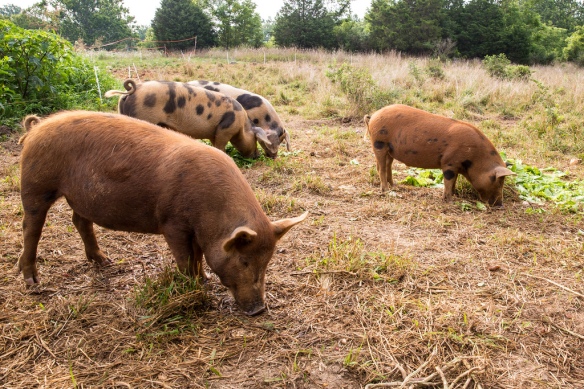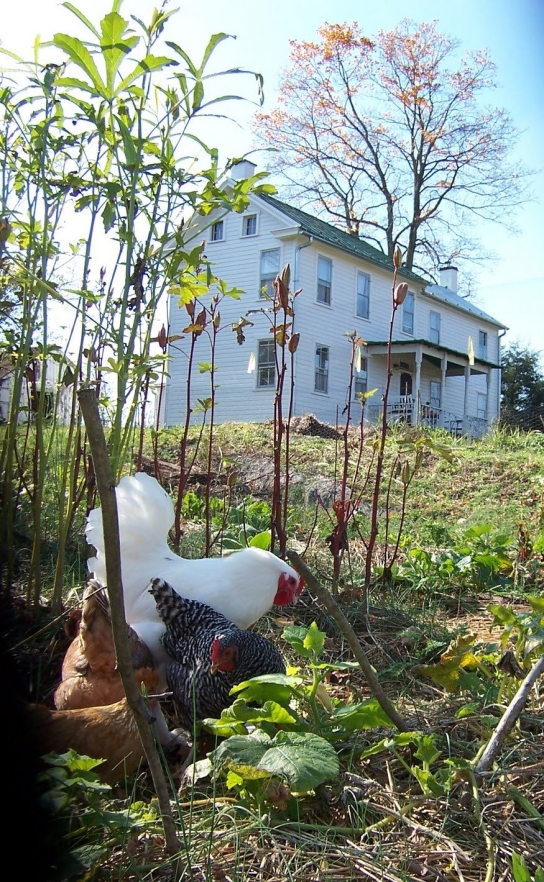As small-scale farmers we face big
issues in trying to get our products into the hands of
eager local consumers. It seems like it should be
a straightforward business: the consumer pays us, the farmers right
down the road, for the great food we raise.
For small farms like ours that raise fruits and vegetables, and laying
hens for eggs, this is pretty much how it works. In fact, because a small
farm can produce only in limited quantities, the farmer, in order to make any
profit, usually opts to sell directly to the consumer. And
whether selling through a CSA, a farm stand, or at a farmers
market, the small farmer marketing fruits and veggies welcomes that
direct interaction and feedback from his customers.
Selling meat raised on a small farm directly to consumers is a bigger
challenge. At Green Gate Farm we raise chicken and pork, but
the path these two products take before being ready for our
customers is not quite so straightforward.
One alternative is for the small farmer to send his birds off to a
commercial processor, who charges a per-bird fee for his services. Of
course, that fee has to become part of the final cost of the bird.
Some small farmers prefer to do the butchering themselves, though in WV, as
in some other states, the infrastructure and state and/or federal
regulations limit the processing of poultry. A small
producer may butcher and sell birds, but only whole birds. The
farmer doesn't have the option of butchering, then parting birds, so
that consumers can purchase just wings, or thighs, or breasts.
The catch is that parting birds
(dividing into sections) must be carried out in government approved
processing facility which is wholly separate from the farm's butchering
area. Most small farms just can't afford to set up a
separate building with a commercial kitchen.
Non poultry livestock is a completely different scenario. Small
farms raising beef, lamb, goats, or pigs usually butcher a few animals at
a time throughout the year. These farmers have to try to find a certified USDA
processor willing to butcher just a handful of animals at a time. Once found, a facility is likely to
be hours away from the farm, and often there is a waiting list to get on the
butchering schedule.
Not that long ago, every small town had such a business, an abattoir or meat
locker facility set up to handle all the local community's butchering
needs. These days meat processing facilities operate on an industrial
scale, handling mega producers, butchering hundreds, even thousands of animals
a day.
The demand for fresh meats locally raised from grass-fed animals
is high, and small producers like us are trying hard to meet that demand and
keep our customers happy. The need for local, medium sized, USDA
sanctioned butchering facilities is, as yet, unmet. All of us, producers
and consumers, will benefit when regulations are changed to support smaller
scale operations, both farms and community based butchers.


